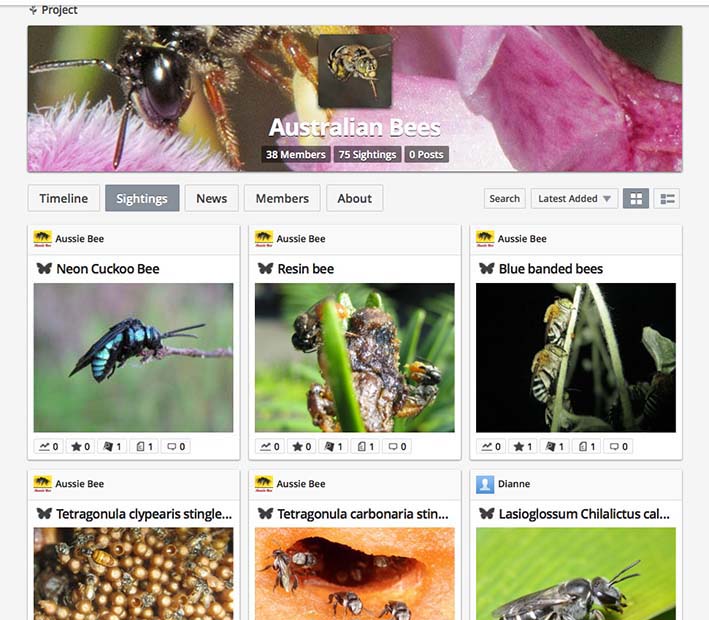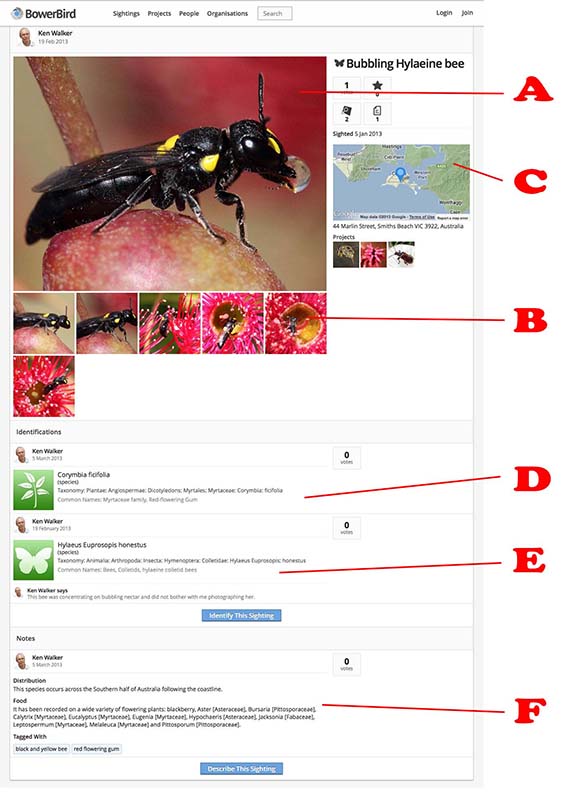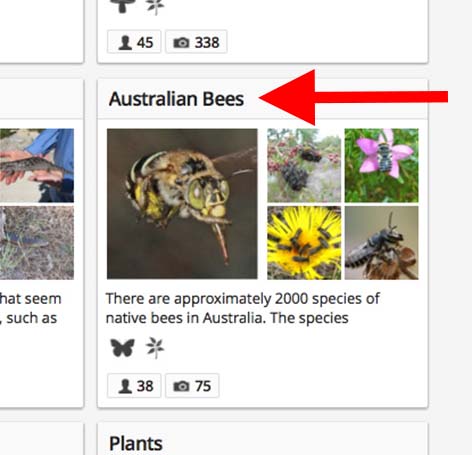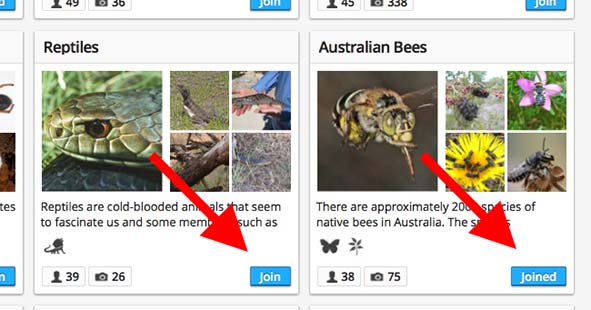Home
Aussie Bee Online
Welcome
New Articles
About Native Bees
Bee Photo Gallery
Bees in Your Area
Common Questions
Rescuing Native Bees
Exotic Bumblebees
What are Stingless Bees?
Buying Stingless Bees
Honey Production
Crop Pollination
Study Native Bees
Field Guide
Information Booklets
Tim Heard's Book
John Klumpp's Book
Aussie Bee Back Issues
Seminars
Links
Support Native Bees
Aussie Bee Shop
Order Form
Who We Are
Donations
Privacy Policy
Free Newsletter
Website Survey
Aussie Bee's Introduction to
BowerBird Website
A New Place to Share and Discuss Your Native Bee Sightings
You can explore BowerBird in three different ways, depending on your level of interest:
1. Look at the native bee sightings already in BowerBird
2. Browse all areas of BowerBird as a public visitor
3. Share your sighting as a member of BowerBird
Need more help? User Guide and Enquiries
|
Important Note:
BowerBird works best with the latest version of Firefox or Chrome. |
1. Look at the Native Bee Sightings Already in BowerBird.
Click on this link to visit the 'Australian Bees' project area of BowerBird website.

Scroll down and select a sighting which you would like to view more closely. Click on the Title of that sighting to see the full details.

In the window that opens you can see:
-- the main photo (A).
-- other smaller photos (B). Click on any of the small photos and an enlarged version will be shown.
-- an interactive map of the sighting (C).
-- identifications -- in this case of both the flower (D) and the bee (E), and
-- description notes (F).

2. Browse all areas of BowerBird as a Public Visitor.
You can view all the current sightings of animals and plants on BowerBird website without joining up! Just click on the 'Sightings' link on the BowerBird homepage.

All sightings on BowerBird are grouped into collections called Projects. For instance there is an 'Australian Bees' project, a 'Butterflies' project, a 'Bird-Life' project and a 'Plants' project.
View all the different projects in BowerBird by clicking on the 'Projects' link on the homepage, or in the top menu bar on any of the subpages of the site.

Look for a project which interests you, such as the 'Australian Bees' project.

Click on the Title of the project box to see the sightings and members in that project.

Then click on the 'Sightings' tab (see red arrow on screen shot below) to see all the latest postings in the project.
-- You can sort the sightings by date or alphabetical order by using the menu on the right (see blue arrow).
-- Or you can search for particular sightings using key words (such as stingless or resin or Megachile) by clicking on the search button on the right (see yellow arrow).

You can also click on the 'Members' tab to see all the people currently contributing to the project. You can click on the member's name to see all the sightings they have made. 
3. Share Your Sighting as a Member of BowerBird
Join BowerBird by clicking on the blue 'Join' button on the BowerBird homepage.

Next click on the 'Projects' tab and choose one or more projects of interest. Join those projects by clicking on the blue 'Join' button -- it changes to a 'Joined' button. You can leave a project at any time by clicking on this blue 'Joined' button again.

The Projects that you have joined will appear as links in the left side of the main window. Click on one of these links to see sightings from that project.

Now you can share a photo or video by clicking on the camera button on the top left of the main window. In the screen that opens you can also provide the location and date of the sighting, identifications (if you know them) and other descriptions.

Need more help? User Guide and Enquiries
For more information about how to use BowerBird, please read the detailed User Guide written by Ken Walker: BowerBird User Guide
You may also send an email to Dr Ken Walker for more help or advice about the BowerBird website:
kwalker@museum.vic.gov.au
|
BowerBird is a socially-networked community website where you can share your native bee sightings and observations, or see the fascinating postings of others. BowerBird was created by Dr Ken Walker of Museum Victoria (Project Manager), Frank Radocaj and Hamish Crittenden (Senior Programmers) and Angela White (Website Designer). Sightings are also uploaded to the exciting 'Atlas of Living Australia' website -- building a massive record of all Australian plant and animal species, to promote Australian biodiversity. |
Search Aussie Bee Website:
Author: Anne Dollin
(See Anne Dollin's Google+ profile)
© 2013 Australian Native Bee Research Centre
PO Box 74, North Richmond NSW 2754, Australia